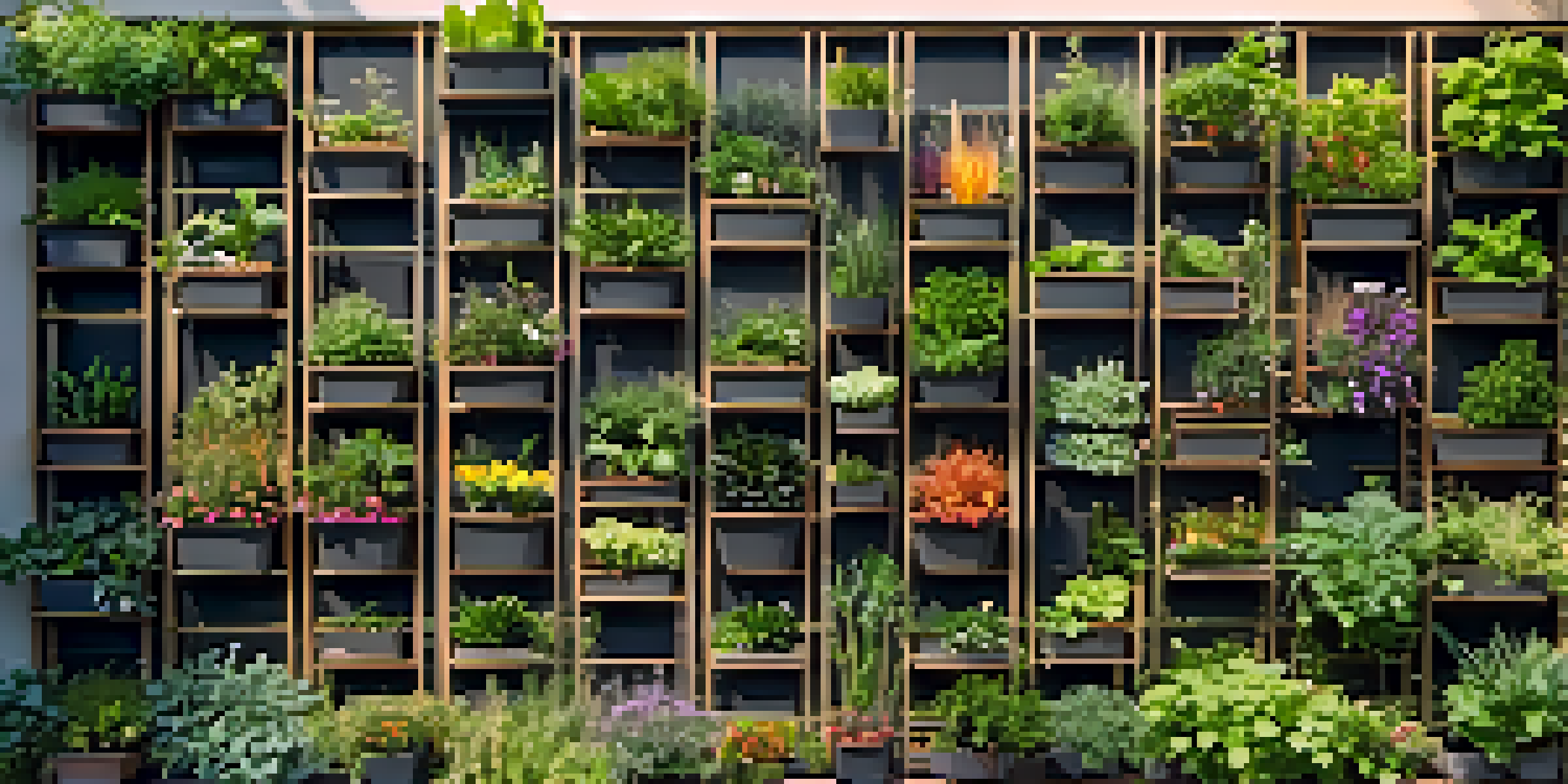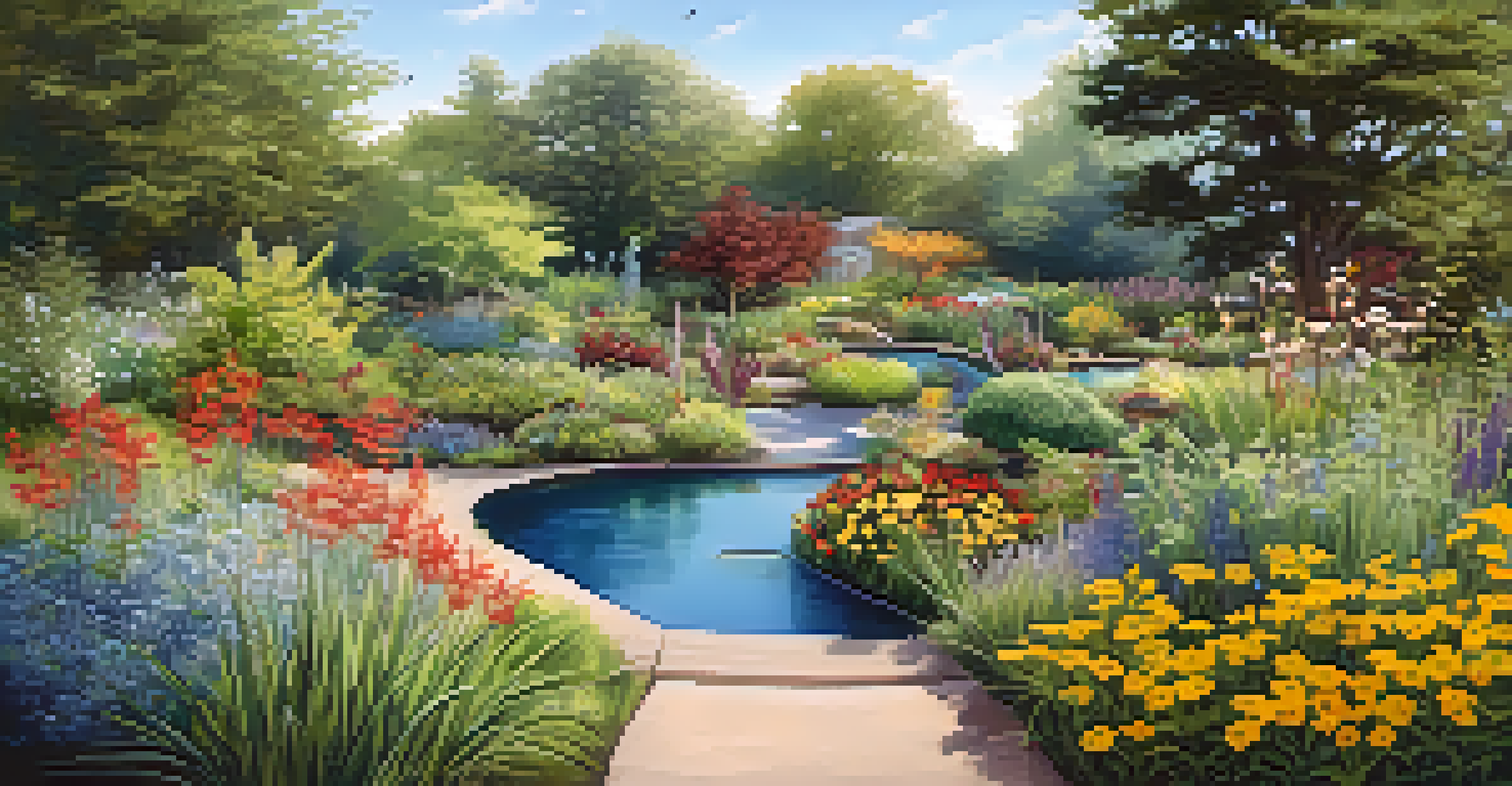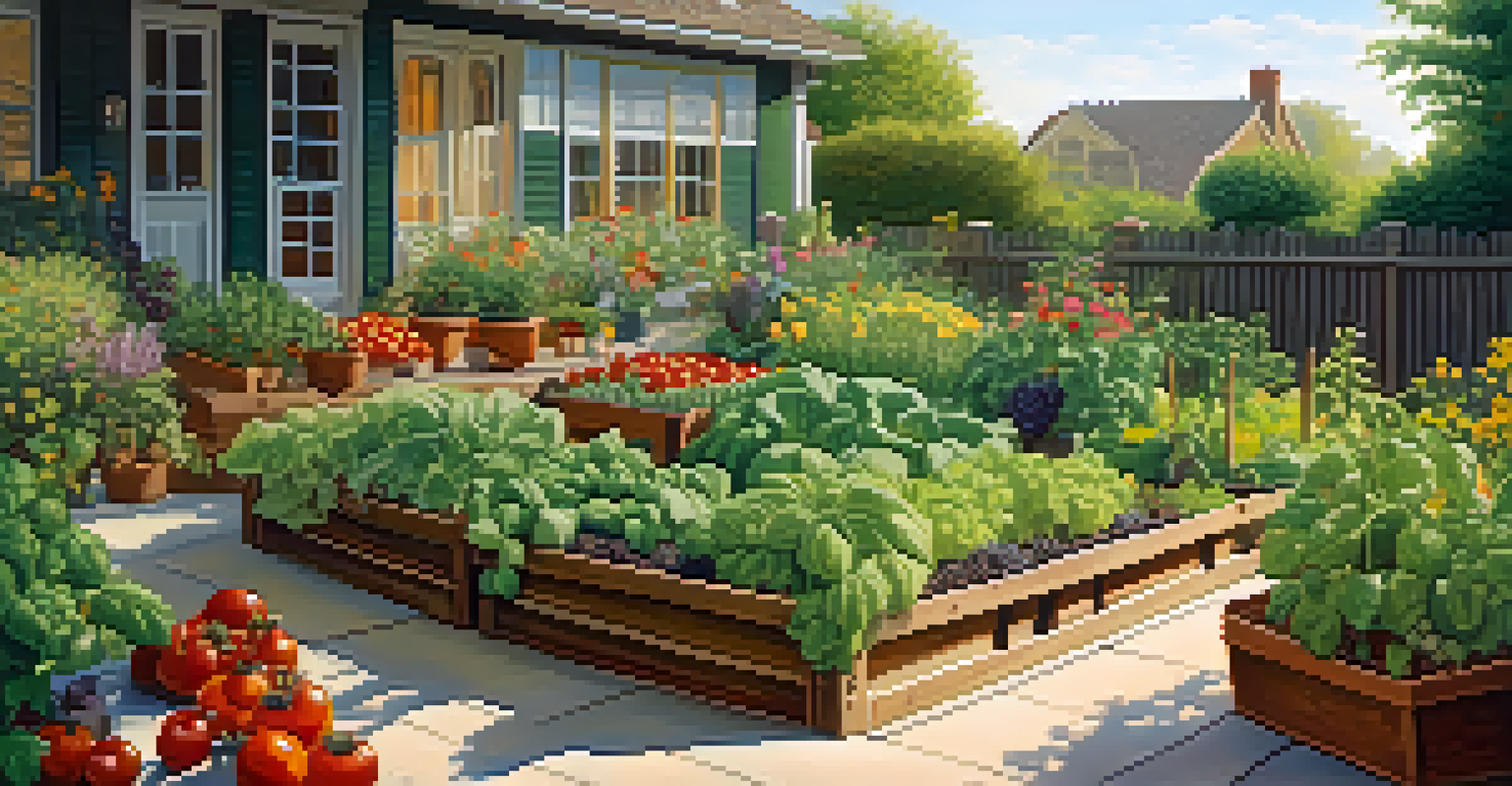Sustainable Landscaping: Trends for Eco-Conscious Living

Understanding Sustainable Landscaping and Its Importance
Sustainable landscaping is all about creating outdoor spaces that are environmentally friendly and resource-efficient. It goes beyond aesthetics, focusing on practices that reduce waste, conserve water, and promote biodiversity. This approach not only benefits the planet but also enhances the quality of life for those who enjoy these green spaces.
The greatest threat to our planet is the belief that someone else will save it.
Incorporating sustainable landscaping practices can significantly decrease your carbon footprint. For instance, using native plants, which are adapted to the local climate and soil, requires less water and maintenance compared to exotic species. This makes them a popular choice among eco-conscious homeowners looking to make a positive impact.
Moreover, sustainable landscaping can increase property value. Buyers are increasingly looking for homes that reflect their values, including environmental consciousness. A well-designed sustainable landscape can set your property apart, making it more appealing in today's market.
Native Plants: The Backbone of Sustainable Landscapes
Native plants are essential to sustainable landscaping because they thrive in local conditions without heavy reliance on fertilizers or pesticides. They support local wildlife, including birds and butterflies, creating a balanced ecosystem in your garden. By choosing native species, you’re not just beautifying your space; you’re also fostering biodiversity.

For example, planting native wildflowers can attract pollinators like bees and butterflies, which are crucial for food production and ecosystem health. These plants require less water and minimal maintenance, making them a smart choice for busy homeowners. Plus, they can fill your garden with vibrant colors and textures throughout the seasons.
Embrace Native Plants for Sustainability
Using native plants in your landscaping supports local ecosystems while reducing maintenance and water needs.
Transitioning to native plants can be as simple as replacing a few non-native species in your garden. With a little research on what grows best in your area, you can create a lush garden that celebrates local flora and fauna while reducing your environmental impact.
Xeriscaping: Water-Efficient Landscaping Techniques
Xeriscaping is a landscaping method designed to minimize water use, making it a popular trend in regions prone to drought. This technique involves selecting drought-resistant plants and strategically placing them to maximize moisture retention. By embracing xeriscaping, you can create a beautiful, low-maintenance garden that thrives in dry conditions.
Nature does not hurry, yet everything is accomplished.
Incorporating mulch, for instance, can help retain soil moisture and reduce the need for frequent watering. Mulch also suppresses weeds, which can compete with your plants for scarce water resources. By layering organic materials like wood chips or straw, you’re enhancing the health of your soil while conserving water.
Additionally, xeriscaping can significantly cut down on your water bill. By planning your landscape with water efficiency in mind, you can enjoy a thriving garden without the guilt of wasting water. It's a win-win for both your wallet and the environment!
Permaculture: Designing with Nature in Mind
Permaculture is a holistic approach to landscaping that mimics natural ecosystems. By observing how nature operates, you can design your garden to work harmoniously with the environment. This philosophy emphasizes sustainable practices and aims to create self-sufficient systems that require minimal intervention.
For example, grouping plants with similar water and sunlight needs can help create a balanced ecosystem. This not only helps conserve resources but also encourages beneficial relationships between plants, such as pest control and pollination. Think of it as creating a community where every plant plays a role in supporting each other.
Xeriscaping Cuts Water Usage
Implementing xeriscaping techniques can significantly reduce water consumption and lower your water bill.
Implementing permaculture principles in your garden can lead to healthier plants and a more resilient landscape. By focusing on the interconnectedness of your garden, you're fostering an environment that thrives naturally, reducing the need for chemical inputs and excessive maintenance.
Vertical Gardens: Space-Saving and Sustainable Solutions
Vertical gardens are an innovative way to bring greenery into urban spaces where ground area is limited. These gardens not only maximize space but also improve air quality and reduce urban heat. By utilizing walls and fences, you can create a lush oasis that enhances your home’s aesthetic while promoting sustainability.
Imagine transforming a bare wall into a vibrant green space filled with herbs, flowers, or even vegetables. Vertical gardens can be created with a variety of materials, from pocket planters to hydroponic systems, making them versatile for any setting. They offer a unique way to connect with nature, even in the heart of the city.
Additionally, vertical gardens can help insulate buildings, reducing energy costs. By absorbing heat in the summer and providing insulation in the winter, these gardens contribute to a more energy-efficient home. They are not just a design trend; they’re a practical solution for eco-conscious living.
Edible Landscaping: Growing Your Own Food Sustainably
Edible landscaping is an exciting trend that combines beauty with functionality by integrating food-producing plants into your garden. This approach allows you to grow fruits, vegetables, and herbs alongside ornamental plants, creating a vibrant and productive space. It’s a fantastic way to promote sustainability and encourage healthy eating habits.
Imagine stepping into your garden and picking fresh tomatoes, basil, or strawberries right off the vine. Not only does this practice reduce the carbon footprint associated with store-bought produce, but it also fosters a deeper connection to your food and where it comes from. Plus, homegrown produce often tastes better than its store-bought counterparts!
Technology Enhances Eco-Friendly Gardens
Smart irrigation systems and gardening apps optimize resource use, making sustainable landscaping easier and more efficient.
Furthermore, edible landscaping can be tailored to fit any space, whether you have a sprawling backyard or a small balcony. With creative planning, you can design a garden that is both beautiful and bountiful, making sustainable living delicious and accessible for everyone.
The Role of Technology in Sustainable Landscaping
As technology advances, so does the potential for sustainable landscaping. Smart irrigation systems, for instance, can optimize water usage by adjusting schedules based on weather conditions. These systems not only conserve water but also ensure that your plants receive the right amount of hydration, promoting healthy growth.
Furthermore, apps and online resources can help you plan and maintain your sustainable garden. From plant care reminders to design inspiration, technology makes it easier than ever to create and manage an eco-friendly landscape. This digital assistance can empower homeowners to make informed decisions that benefit both their gardens and the environment.

Additionally, drones and sensors are becoming popular tools for monitoring soil health and plant growth. By utilizing these technologies, you can gather data to make precise adjustments to your landscaping practices. The integration of technology into sustainable landscaping is paving the way for a greener, more efficient future.